Engineered Wood Flooring for the Home
Considering engineered wood flooring? Get all the details on engineered wood floors and find out whether they are right for you!
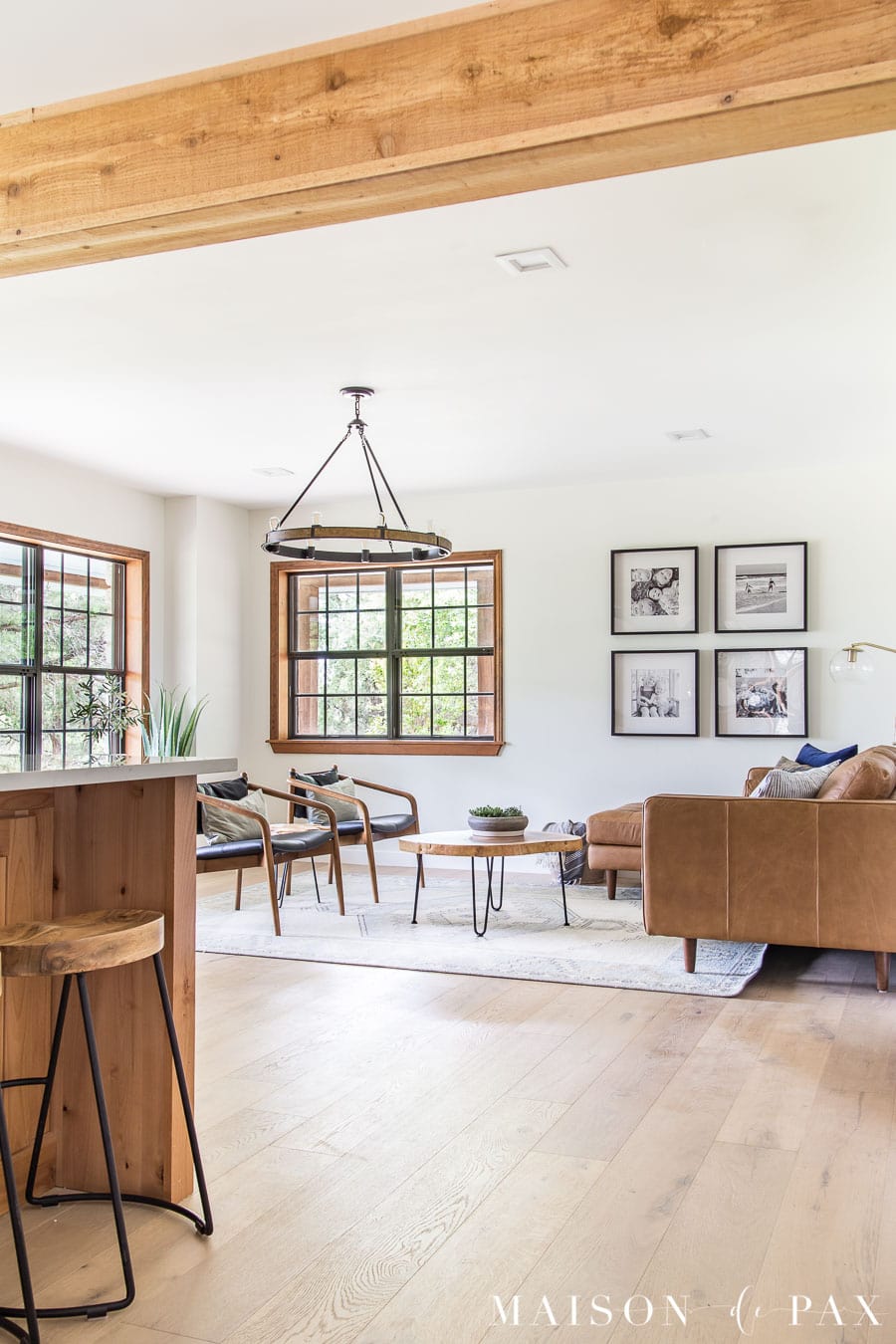
I’ve shared this before, but my husband and I both grew up in old homes. They weren’t necessarily fancy, but they did have solid hardwood floors. In fact, all our homes in our single and married life had real hardwood floors, as well… Until we bought our current 1990’s home and embarked into the world of engineered wood flooring.
Since then, I have put white oak engineered floors into all my major renovation projects. And I get questions about them from readers almost daily… So I decided it was high time I wrote a post all about engineered wood floors.
What is engineered wood flooring?
Engineered wood floors are planked wood flooring made of a plywood base with a solid wood top layer. Think of it almost like a veneer on furniture. The top layer, also known as the wear layer, can be made of a wide variety of hard wood species, including oak, walnut, acacia, and more.
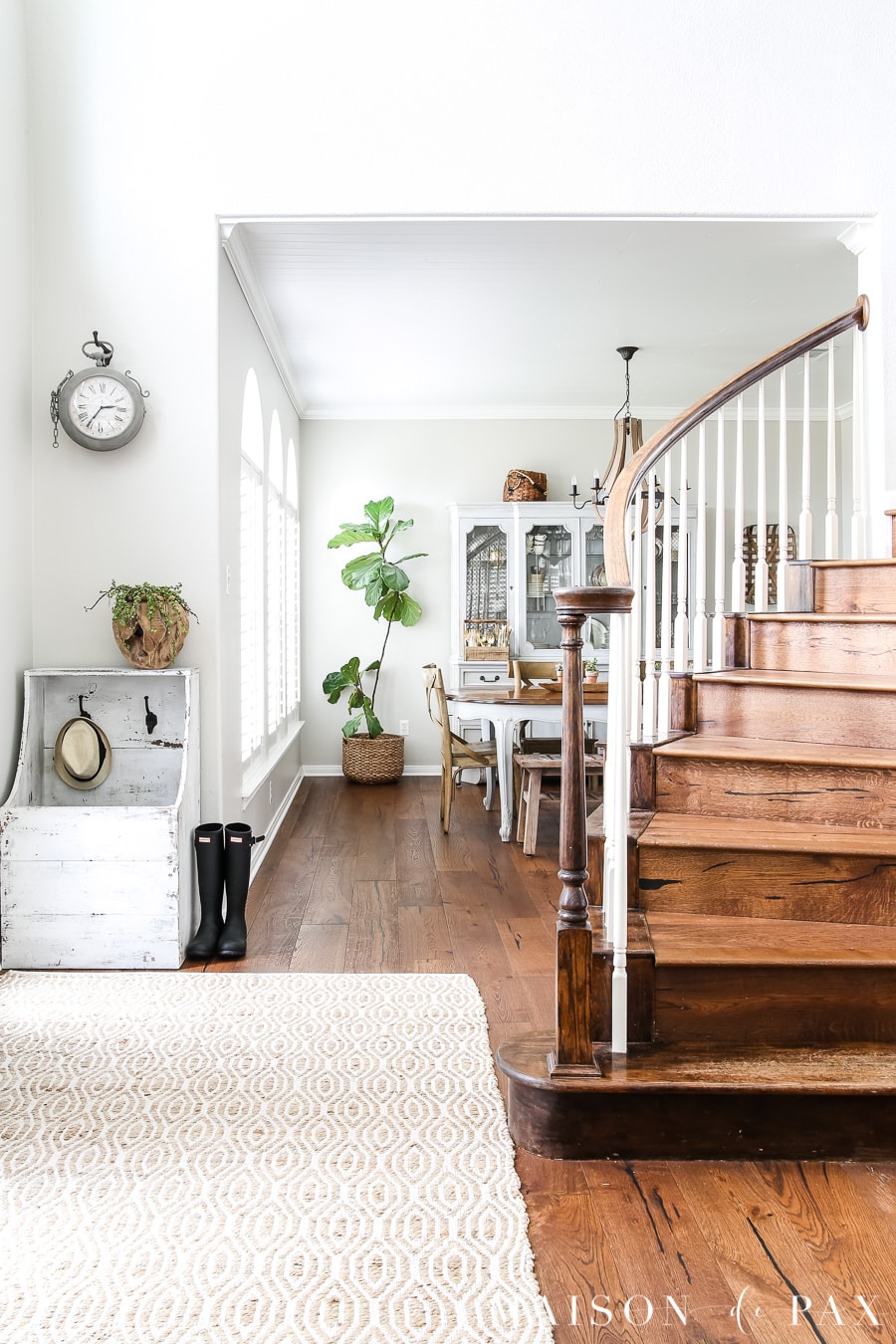
The Benefits of Engineered Wood Floors
Which brings us to one of the major benefits of engineered wood floors. Engineered wood floors can be installed directly over concrete, whereas hardwood floors need an OSB or plywood subfloor beneath them. What this means is that if you are replacing ground-level tile floors, for example, with wood flooring, you will have a much easier job if you choose engineered wood floors. Installing hardwood floors would require installing a subfloor first, which could affect your door heights and trim work significantly.
Engineered wood floors are also far more resistant to moisture and temperature changes, so they are a better choice for basements or anything below grade. And they are a better choice when installing over radiant heating systems.
Cost can also be a benefit of engineered wood floors. While you can still spend a lot on engineered floors, the veneer of hardwood means that you can get widths and species of many types of hardwood that you want for significantly less than a solid plank of that size and species would cost.
Common Finishes for Engineered Hardwood Flooring
Most engineered wood floors are pre-finished (meaning they are finished in a factory, rather than on site at installation). Pre-finished wood floors are usually done with either a urethane finish that contains aluminum oxide (which is basically a really strong, baked-on plastic-like protective finish that sits on top of the wood surface) or a UV oil finish (which is a penetrating finish that protects the wood while leaving it a little more naturally exposed).
The aluminum-oxide finish is incredibly strong and durable, but if it is ever scratched, it is very hard to repair. Aluminum-oxide finishes are so difficult to remove that it can significantly increase the difficulty in refinishing the flooring.
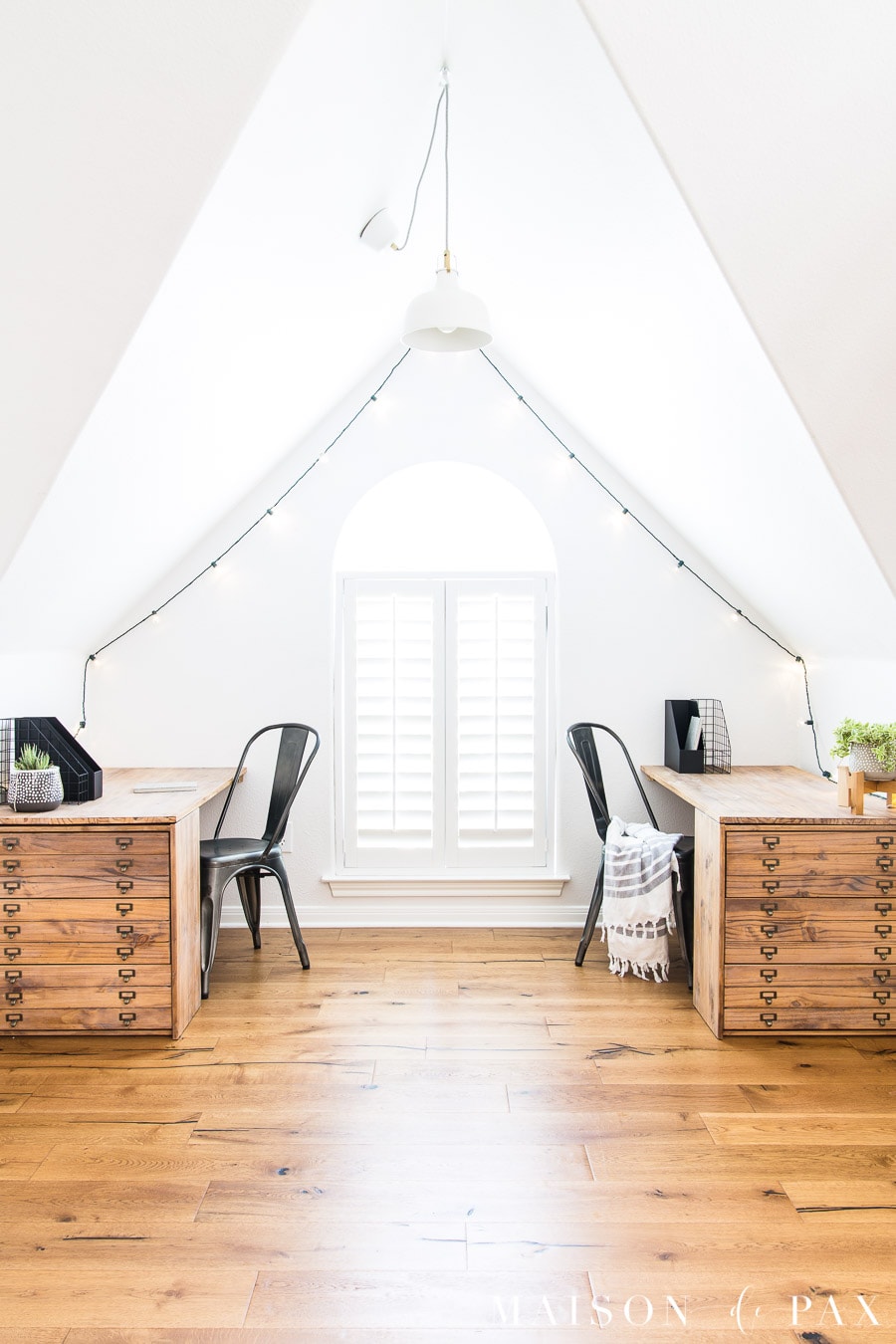
UV oil finishes, though, provide a beautiful matte finish to engineered hardwood floors. The penetrating finish and the low luster minimizes scratches and wears more evenly. It can also be refinished or touched up with much less effort.
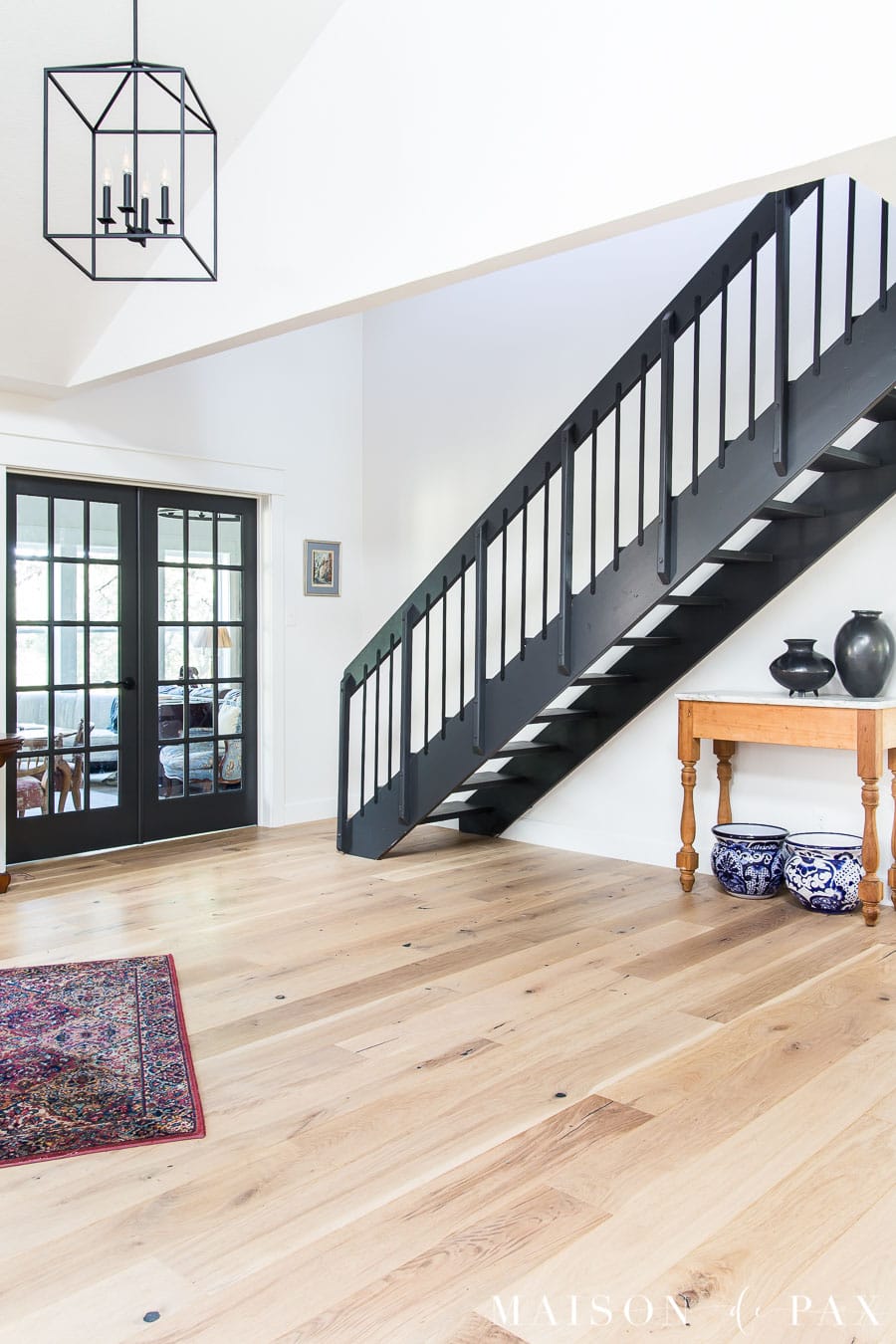
We actually have both kinds in our home; we fell in love with a UV oil finish floor that was above our budget, so we compromised by putting it downstairs and using a less expensive aluminum-oxide finish upstairs. Both have been great! But I love the UV oil finished floors so much that we have used them in two subsequent full-home renovations: our ranch and my parents’ new house.
How to clean engineered wood floors
Cleaning engineered wood floors is actually dependent on the sealer used to protect the wood.
Most floors finished with an aluminum-oxide finish are best cleaned with something like Bona. UV oil-finished floors, on the other hand, require a wood soap cleaning. Be sure to check with your floor’s manufacturer for the right products to clean your floors.
And check out this post for more info as well as practical tips for keeping wood floors clean.
How does engineered wood flooring compare to…
Hardwood Floors vs Engineered
I touched on this already, but basically solid hardwood floors are solid wood planks, while engineered floors are a veneer of hardwood over plywood.
Vinyl Flooring vs Engineered Wood
Vinyl flooring, or luxury vinyl planks (LVP), are mostly thick sturdy vinyl with an wood-look image protected by a clear coating and (usually) an aluminum oxide layer. There is no real wood in LVP, while engineered wood floors are entirely made of real wood.
Engineered wood flooring vs Laminate
Laminate is an image of wood fused to fiberboard, which is not as durable engineered wood floors. The fiberboard is also more susceptible to problems from moisture than real plywood.
Engineered Wood Floors FAQS:
Are engineered wood floors real wood?
Yes! The top layer is real wood in your finished species of choice, while the lower layers are plywood. The plywood core is also real wood.
What is the difference between hardwood floors and engineered wood floors?
Harwood floors are a single plank of wood all the way through, while engineered wood floors offer just a top layer of hardwood over a plywood base.
Can you refinish engineered wood floors?
This depends on the thickness of your wear layer. The top layer of hardwood must be at least 2mm thick, and preferably 3mm thick, to refinish. 4mm thick or higher usually allows for multiple refinishings.
What is the best thickness for engineered wood flooring?
The higher the wear layer thickness, the better (since it allows for refinishing and longer life/wear)… but the thicker wear layers are also pricier. I like to go with a minimum of 3mm (which is the thickness of my favorite floors).
Can I use engineered wood floor in kitchens?
Yes! Remember they cannot endure standing water (they are wood, after all), but the plywood base allows them to expand and contract suitably for environments with some moisture. I have found that a UV oil finish is the best engineered wood flooring for high traffic, and we have been very pleased with how it wears in kitchens.
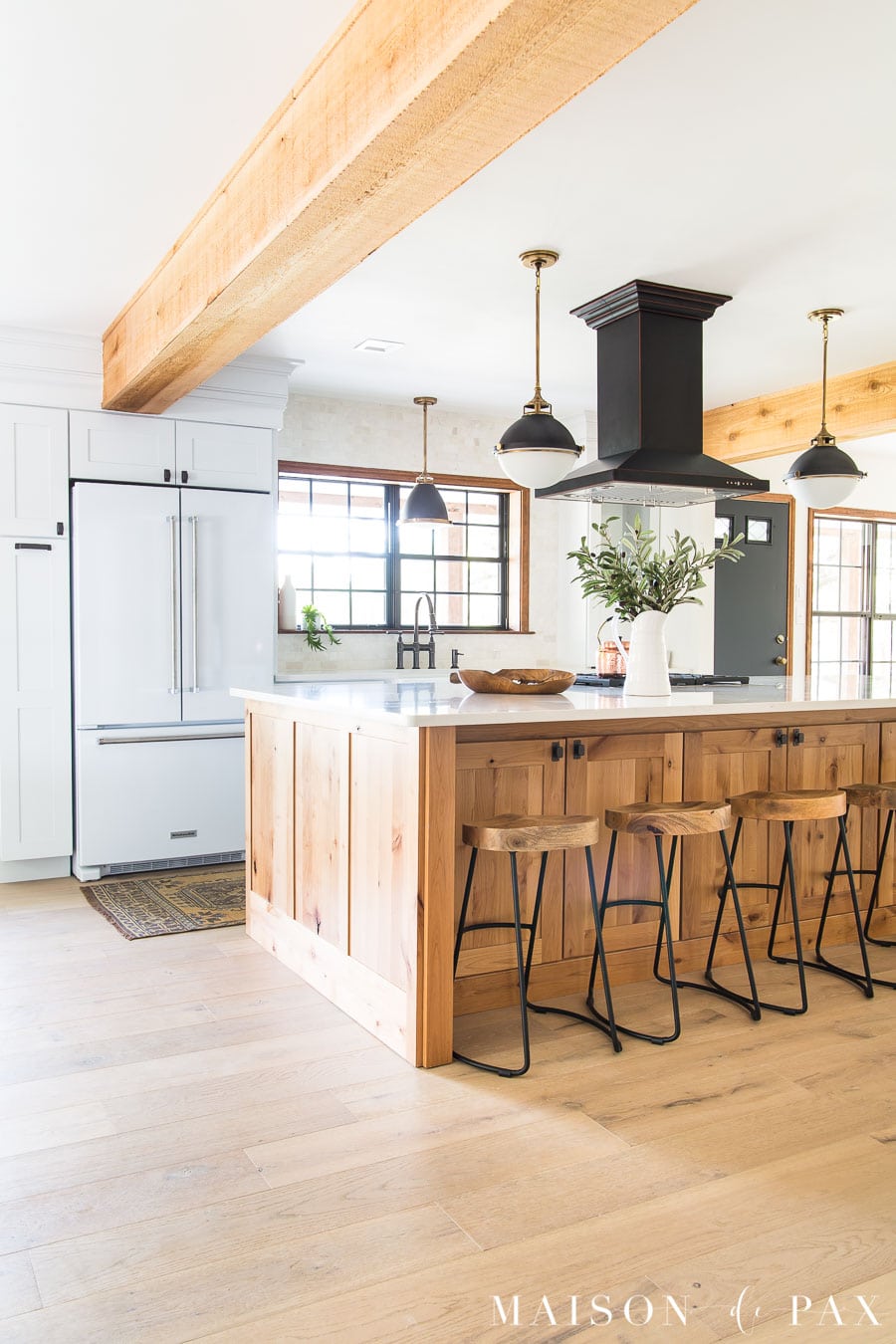
Sources:
wide plank white oak engineered floors pictured above (dark: Montmajour, light: Rivera (our ranch house) and Larsson (#clientmomanddad project)
You might also enjoy these other posts on flooring:
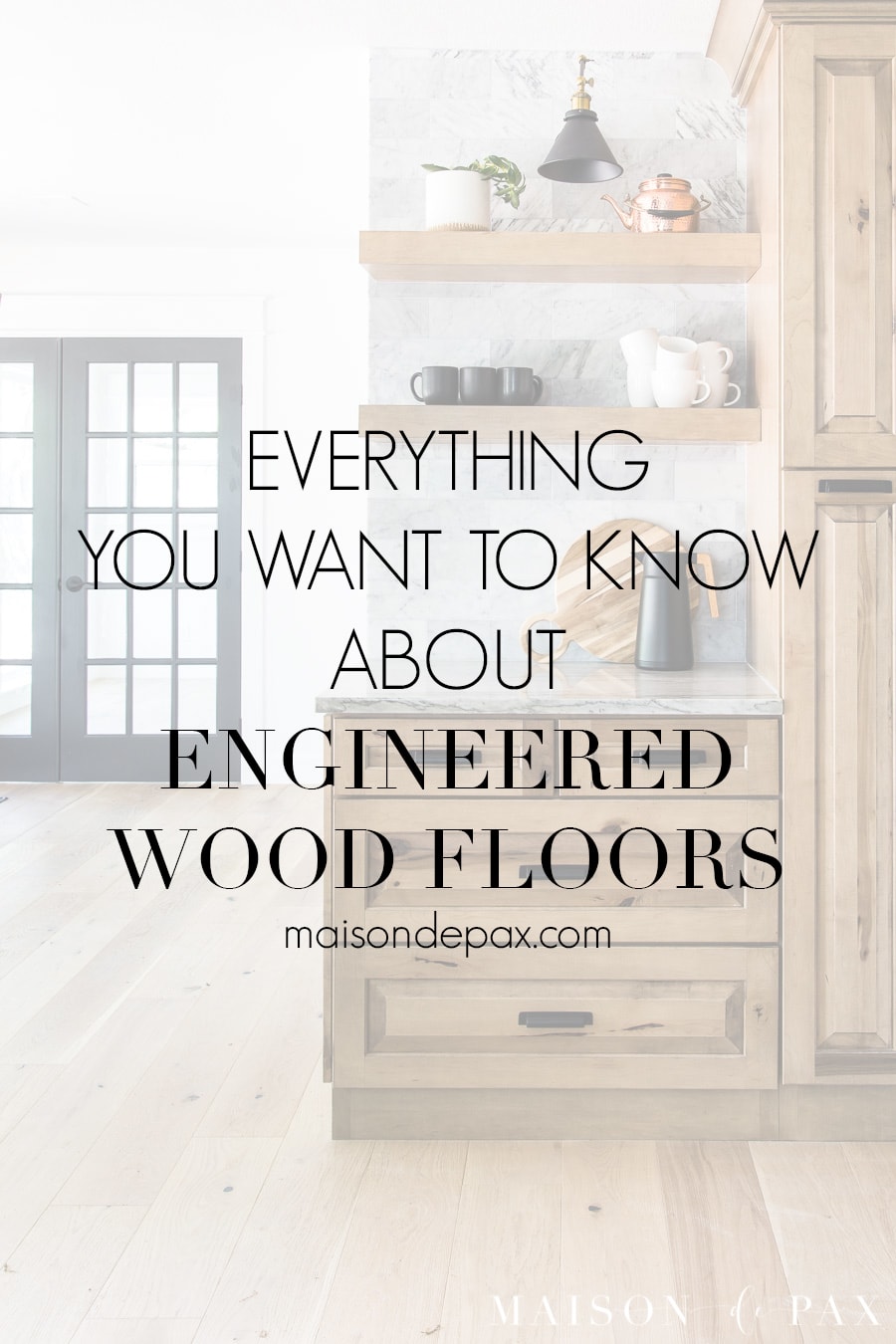

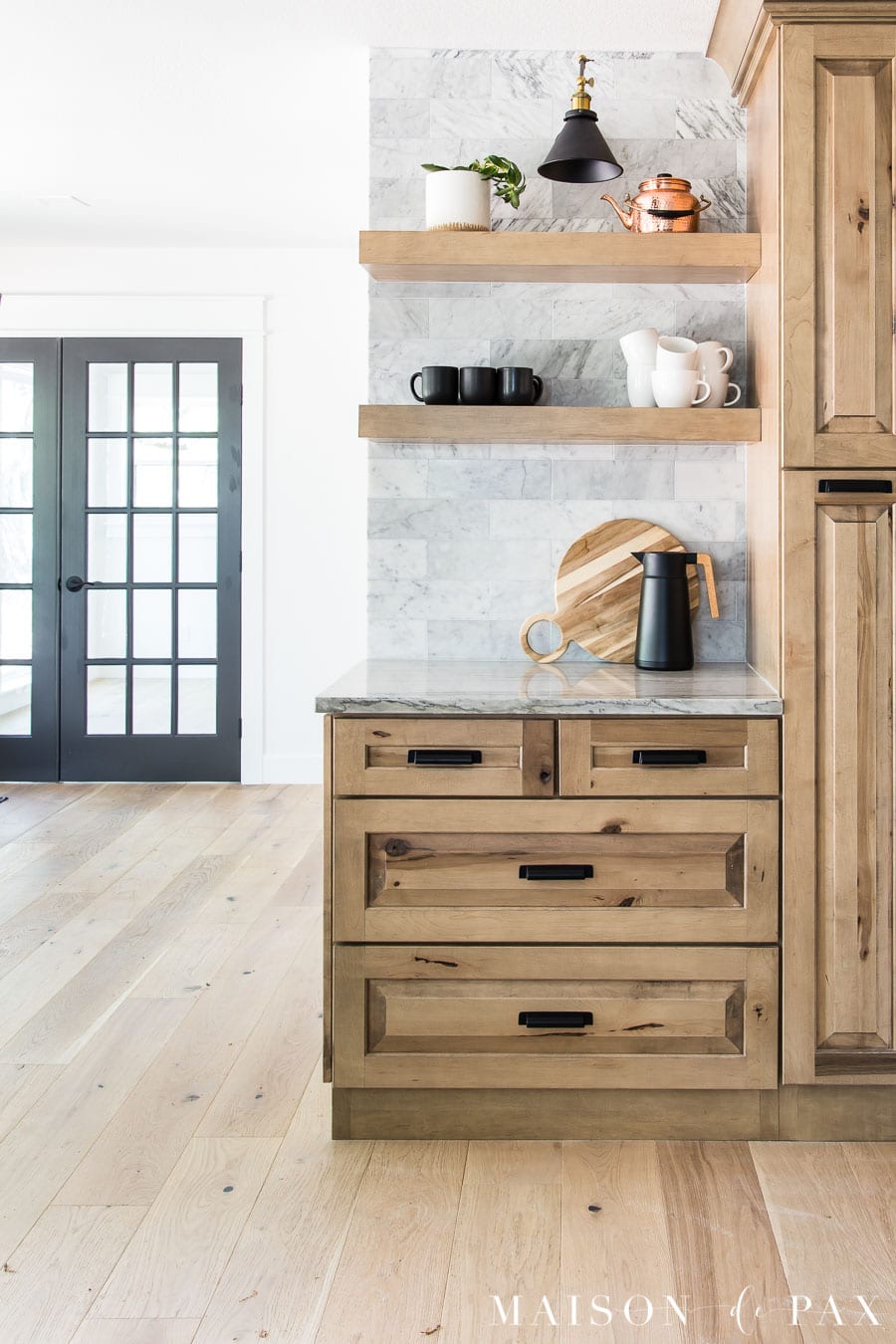
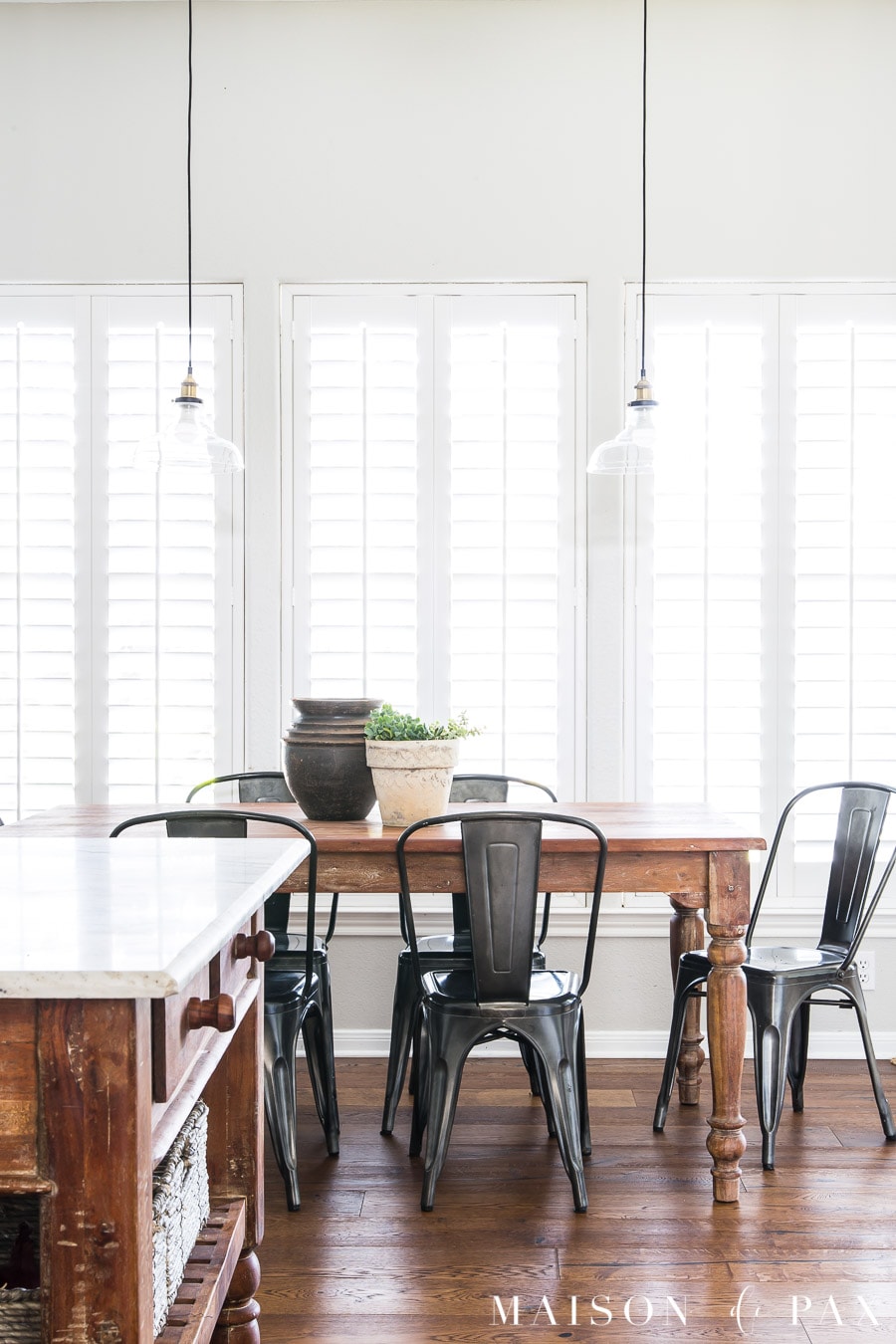
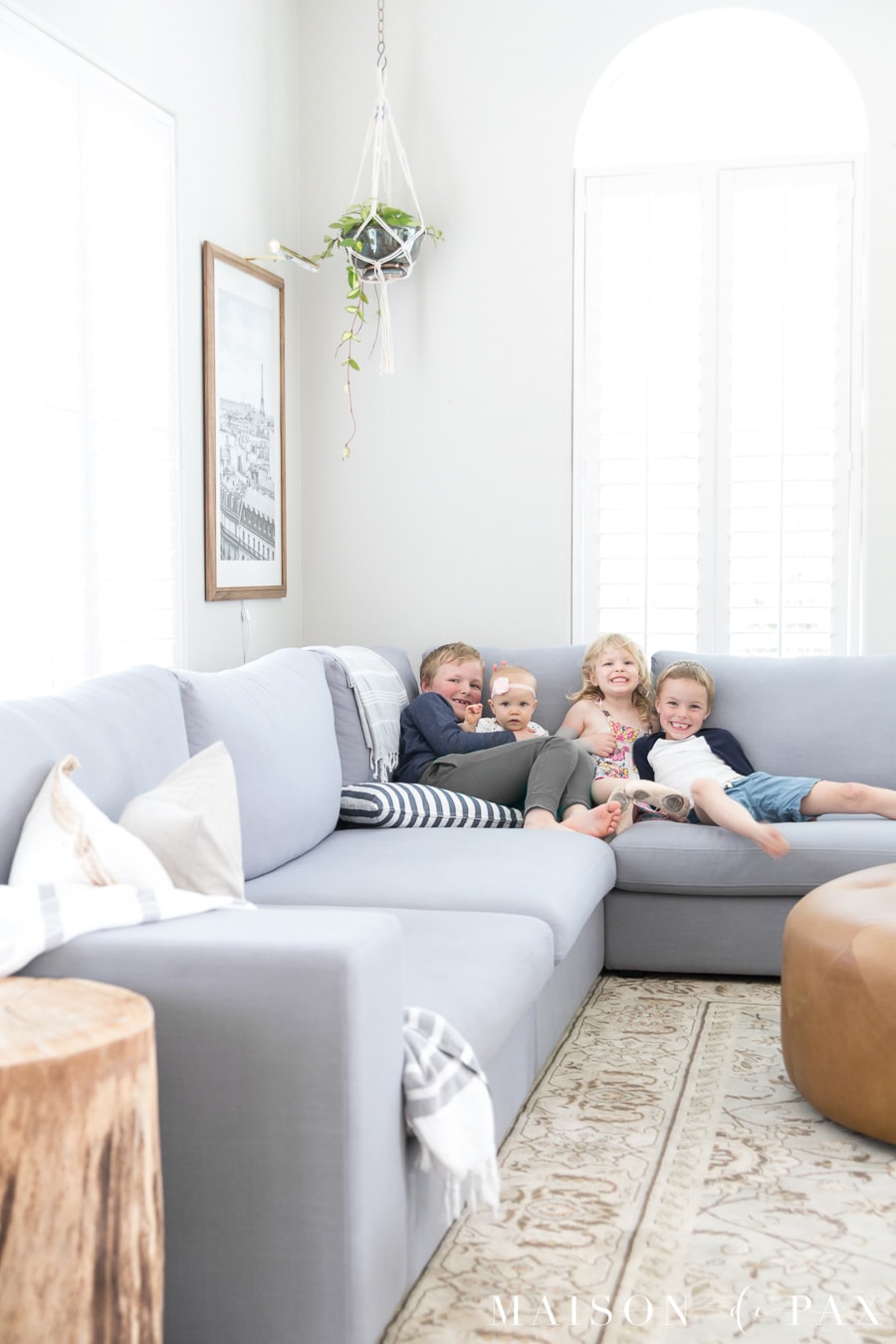

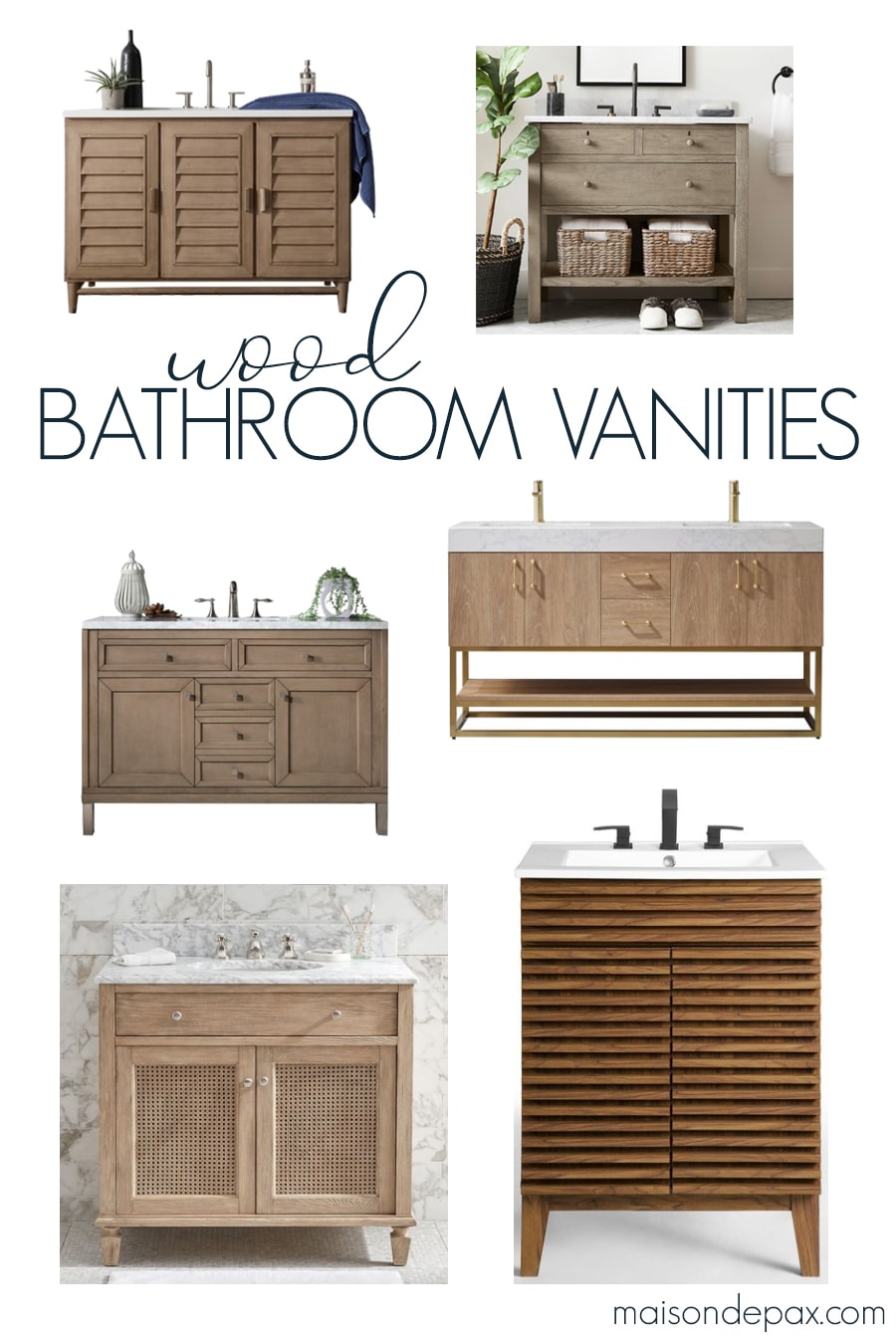
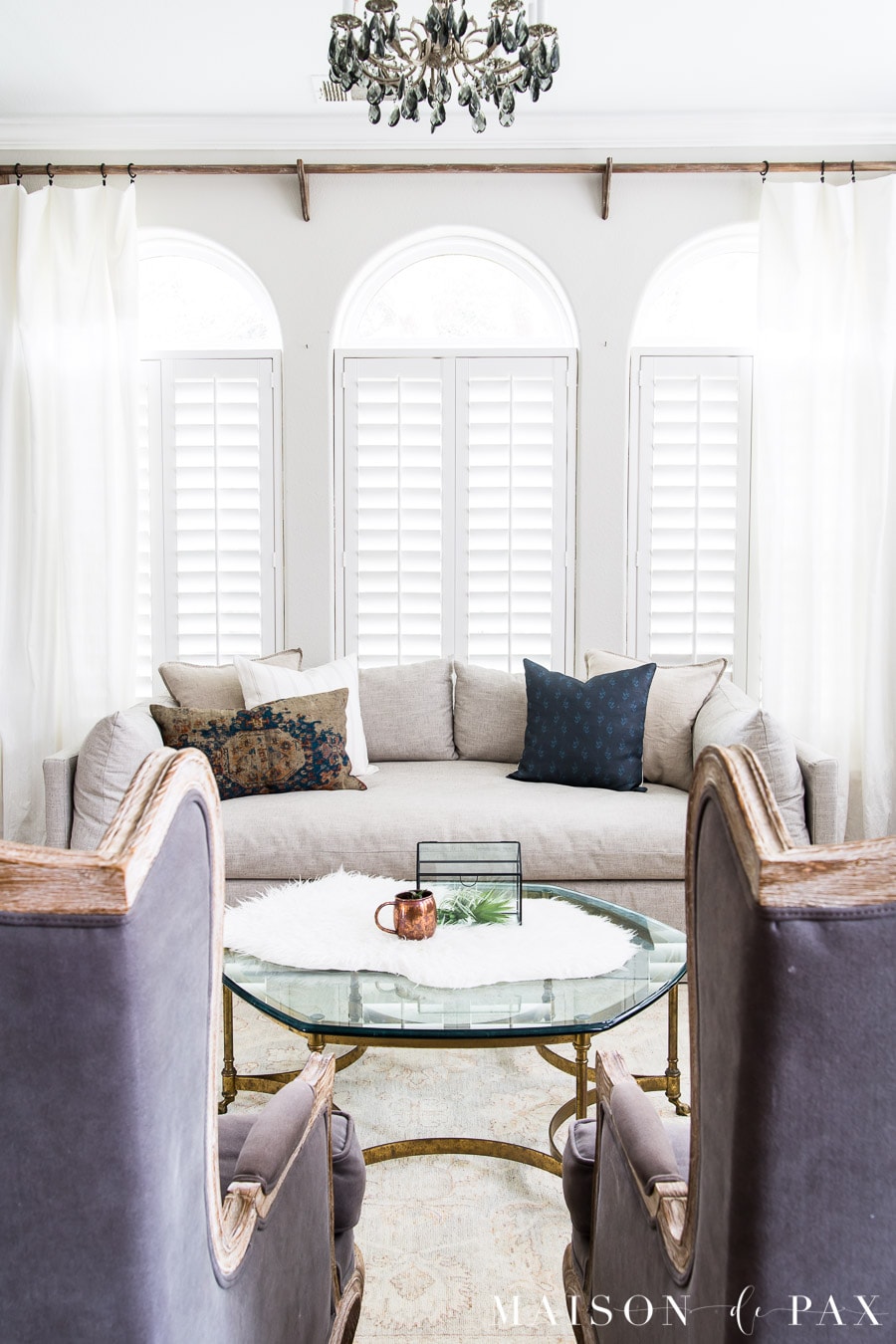
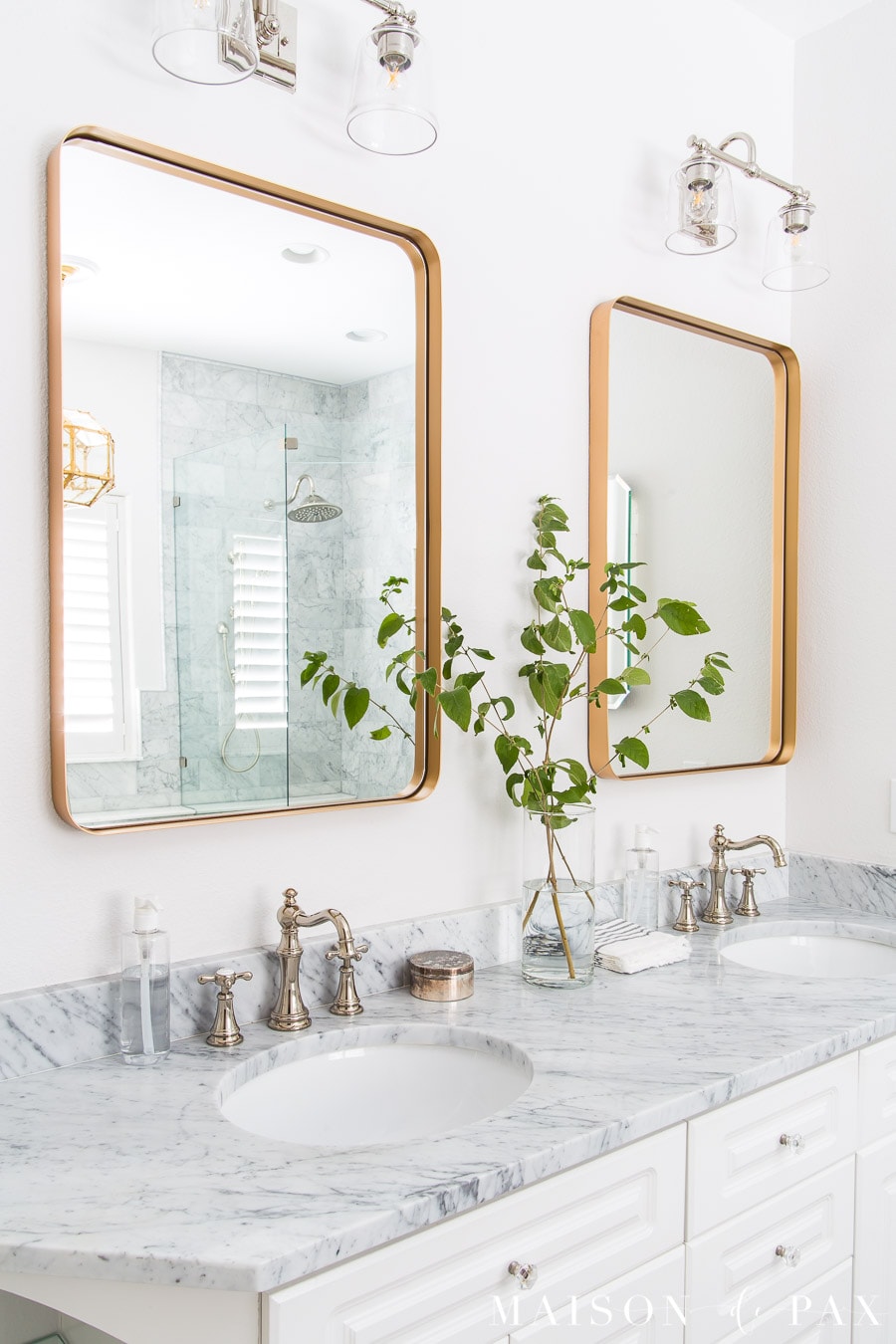
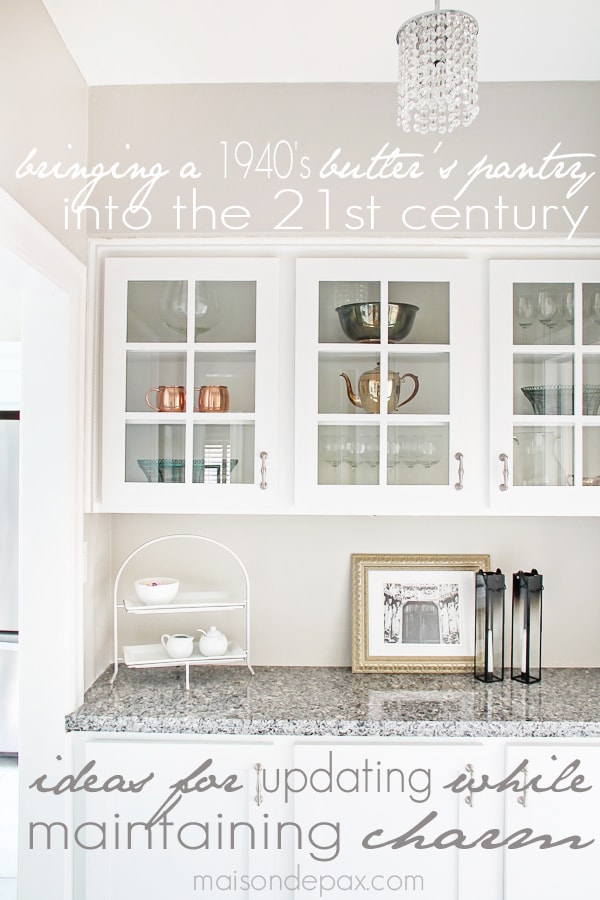
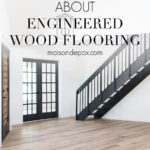


Great info! I went from solid hardwood floors in previous homes to engineered wood in our current home and have been really happy with them. The only thing I really miss about solid hardwood floors was being able to mop them with an oil soap. Most people would probably find that a plus about engineered wood, that you can’t drag around a mop and bucket, but I miss the smell after mopping the house. 🙂
Yes, there are always little things I miss about solid hardwoods as well!
I went to the engineered wood flooring link and they are all white oak. What color is the light color of your floors. I absolutely love those. I don’t like orange tones in wood and yours look wonderful. Please share color of yours. Thanks.
Hi Tammy! It’s Rivera from Greenworld Industries.
When you renovated your parents home with the white uppers wood husk stained lowers which flooring did you use?
They were the Greenworld Industries Artisan line in the Larsson color. I hope that helps!
Hi! What floors are in the second photo with the curved staircase? They are beautiful and might be what we are looking for!
Hi Shawna! You can find all the details of those floors here: https://www.maisondepax.com/wide-plank-oak-floors/